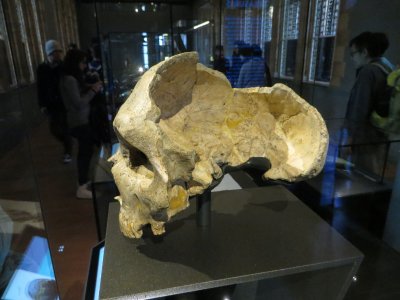blessmycottonsocks
Antediluvian
- Joined
- Dec 22, 2014
- Messages
- 9,722
- Location
- Wessex and Mercia
Just looking at the profile of the famous Gibraltar 1 skull.
Gibraltar is widely thought to have been the last refuge of the Neanderthal people and this skull, of an adult female, may be as recent as 30,000 years old.
Whilst the nose and eye sockets appear comparatively large, the overall profile is remarkably gracile, lacking the robust brow-ridges that usually typify the Neanderthal.
It was, in fact, originally identified as a new and distinct branch of the homo line - Homo Calpicus, before being eventually classed as Neanderthal.
This got me thinking that, after some 150,000 years were Neanderthals developing more gracile features and were the last of the Neanderthals physically almost indistinguishable from contemporaneous European Homo Sapiens the Cro-Magnon?

Gibraltar is widely thought to have been the last refuge of the Neanderthal people and this skull, of an adult female, may be as recent as 30,000 years old.
Whilst the nose and eye sockets appear comparatively large, the overall profile is remarkably gracile, lacking the robust brow-ridges that usually typify the Neanderthal.
It was, in fact, originally identified as a new and distinct branch of the homo line - Homo Calpicus, before being eventually classed as Neanderthal.
This got me thinking that, after some 150,000 years were Neanderthals developing more gracile features and were the last of the Neanderthals physically almost indistinguishable from contemporaneous European Homo Sapiens the Cro-Magnon?





